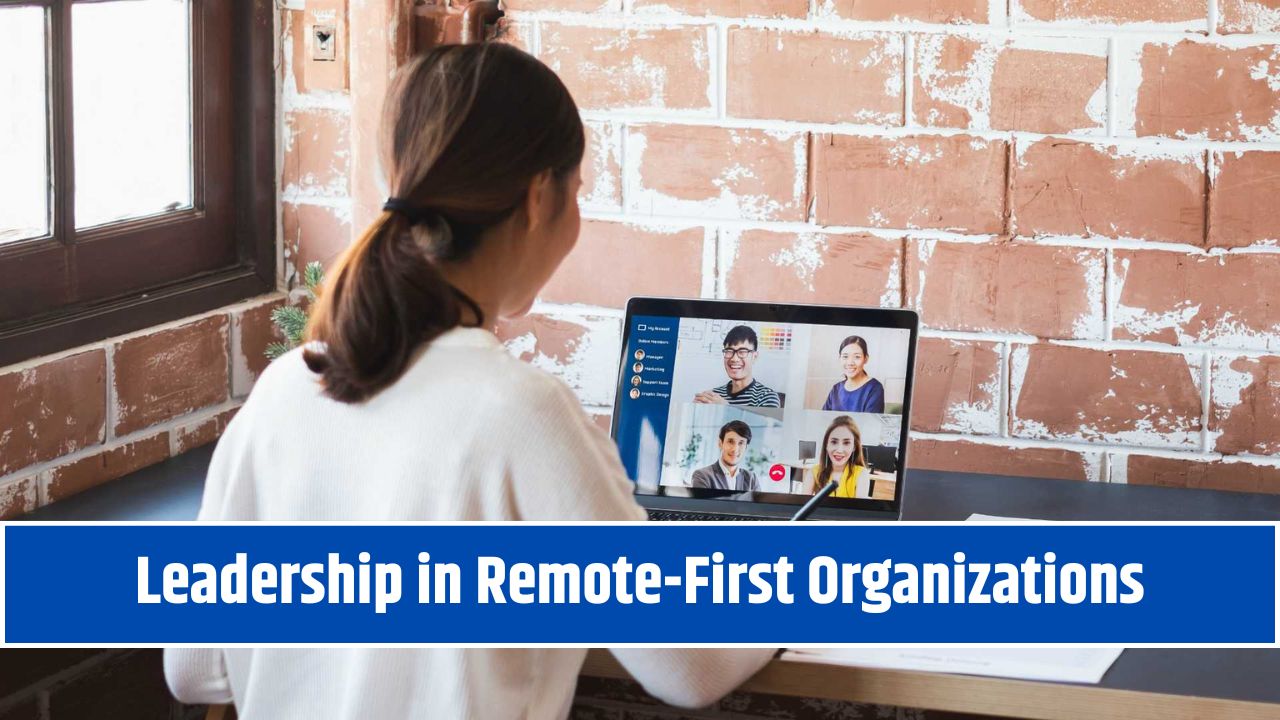“Can you hear me now?”
Classic Zoom struggle. But here’s the bigger question: can your team feel you now?
Remote-first work has flipped everything we thought we knew about leadership on its head. Forget the corner office. Forget rallying the team around a whiteboard. Forget body language cues, watercooler moments, or the casual “Hey, got a sec?” in the hallway.
In a world where your team lives in Slack threads and Google Meet grids, the way we lead needs a serious reboot.
If you’re leading a remote-first team (or preparing to), this post is your survival kit. Equal parts strategy, psychology, and digital empathy — this is how leadership really works in the era of Wi-Fi and webcams.
Grab your cold brew or matcha, and let’s dive in.
First, What Is a Remote-First Organization?
Let’s get the jargon out of the way.
A remote-first organization is designed from the ground up to support work that’s primarily done outside of a shared physical office. This isn’t the “WFH because of a snowstorm” vibe — it’s a deliberate structure that prioritizes location-independent operations.
This means:
- Offices (if any) are optional, not central.
- Processes assume people are distributed.
- Communication is default digital.
- Culture-building is intentional — not accidental.
In a nutshell? Remote-first isn’t just about where people work. It’s about rethinking how we lead, connect, and build teams across time zones and kitchen tables.
Leading in a Remote World Is a Different Game
Traditional leadership relied heavily on proximity power — you saw people, they saw you, and leadership was often visible, physical, and top-down.
Now? Leadership is invisible unless you make it felt.
Here’s what remote-first leadership demands:
- Less micromanagement, more trust
- Less presence, more clarity
- Fewer check-ins, more outcomes
- Less “boss energy,” more coaching mindset
Common Mistakes Remote Leaders Make (And How to Avoid Them)
Mistake #1: Thinking “Out of Sight” = “Out of Mind”
Remote employees often struggle with visibility. If your leadership style depends on seeing people work, you’re missing the point. Results don’t need to be watched — they need to be enabled.
Do this instead: Focus on output, not hours. Track goals. Celebrate wins publicly. Make sure quiet performers don’t become invisible.
Mistake #2: Leading Only Through Meetings
Some managers think, “Let’s fix that with a call.” Suddenly, everyone’s drowning in back-to-back Zooms and still unclear on what’s happening.
Do this instead: Practice asynchronous leadership. Use tools like Notion, Loom, and Trello to communicate decisions and directions clearly — without hijacking calendars.
Mistake #3: Ignoring Culture
Out of office shouldn’t mean out of culture. If you’re not intentionally building connection, isolation creeps in. Fast.
Do this instead: Create rituals. Celebrate birthdays. Start meetings with a “vibe check.” Host virtual coworking hours or casual coffee chats. Remote culture is a thing — you just have to design it.
The Remote Leader’s Toolkit: Skills You Actually Need
Being a great remote-first leader means leveling up in areas you might have neglected in-office.
Let’s break it down:
1. Clear, Concise Communication
You can’t rely on tone or facial cues. What you write and say must be easy to understand — and impossible to misinterpret.
Tactical tips:
- Use bullet points. Be structured.
- Record quick Loom videos for complex things.
- Repeat the same message across channels. Repetition = retention.
2. Outcome-Based Management
Stop asking “What are you working on?” Start asking “What did we ship this week?”
Tactical tips:
- Use OKRs or KPIs to align your team.
- Track progress in tools like ClickUp or Asana.
- Reward outcomes, not busywork.
3. Digital Empathy
You won’t always see someone’s stress, burnout, or struggle. You need to lead with curiosity and care.
Tactical tips:
- Ask “How are you doing really?”
- Normalize mental health days.
- Model vulnerability (yes, even on Slack).
4. Asynchronous Leadership
If you’re only a good leader in meetings, you’re not a good leader for remote-first.
Tactical tips:
- Create “leader memos” — written updates from you each week
- Encourage deep work hours (no meetings before noon, for example)
- Respect time zones. Not everyone’s on your clock.
5. Tech-Savviness
You don’t have to be a full-on Notion wizard or Zapier god — but you do need to know how tools support flow.
Recommended stack:
- Communication: Slack, Discord, Loom
- Docs & Collaboration: Notion, Google Docs, Confluence
- Project Management: Trello, ClickUp, Linear
- Async Video: Loom, Vimeo, Descript
- Feedback & Culture: Officevibe, Donut, Polly
The Power of Written Leadership
Remote-first companies are often writing-first cultures. And that’s a good thing.
Why?
- Written decisions = more transparency
- Written feedback = clearer development
- Written praise = documented recognition
If you’re not confident in your writing — start practicing. Great remote leaders communicate with written presence just as much as spoken charisma.
Leading Without Micromanaging: How to Trust Your Team
One word: Autonomy.
Micromanaging doesn’t scale in remote. Trust does. But trust isn’t blind — it’s built through systems.
Here’s how:
- Clear expectations: Be super specific about deliverables.
- Check-in rhythms: Weekly 1:1s, async updates, daily Slack huddles.
- Accountability loops: Peer reviews, retros, and “show your work” threads.
- Freedom within framework: Let people choose how they get results — just be crystal clear on what the results are.
Leading Across Time Zones
Managing global teams? You’re not just a leader now — you’re a timezone diplomat.
Tips:
- Rotate meeting times for fairness
- Record everything (and summarize it)
- Use collaborative docs, not real-time-only tools
- Respect people’s “off” hours — burnout happens in silence
Final Thought: Remote Leadership Isn’t Harder — It’s Just Different
Remote-first leadership isn’t about being everywhere.
It’s about building trust without proximity, culture without a ping-pong table, and clarity without shouting across cubicles.
It asks you to slow down, be intentional, communicate more and less — and above all, lead with presence, not pressure.
You can’t rely on the old playbook anymore. But that’s good news — because you get to write your own.




